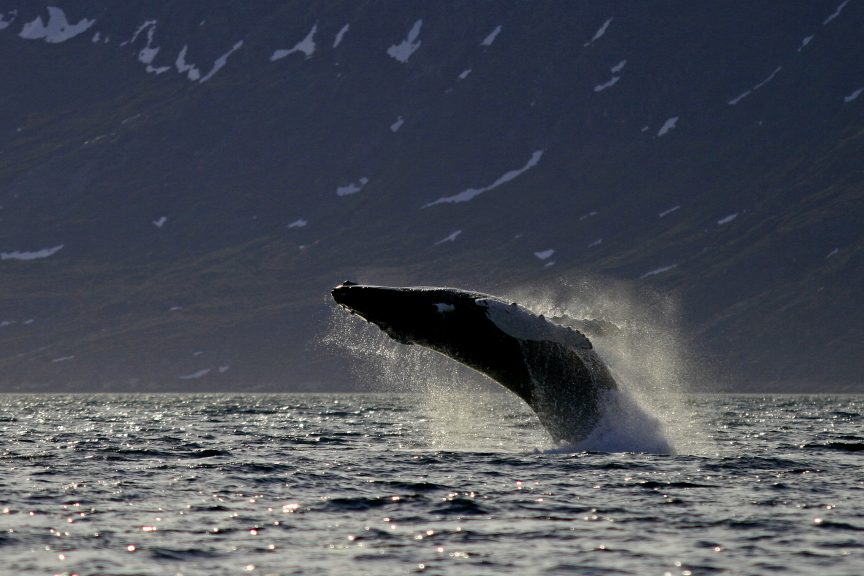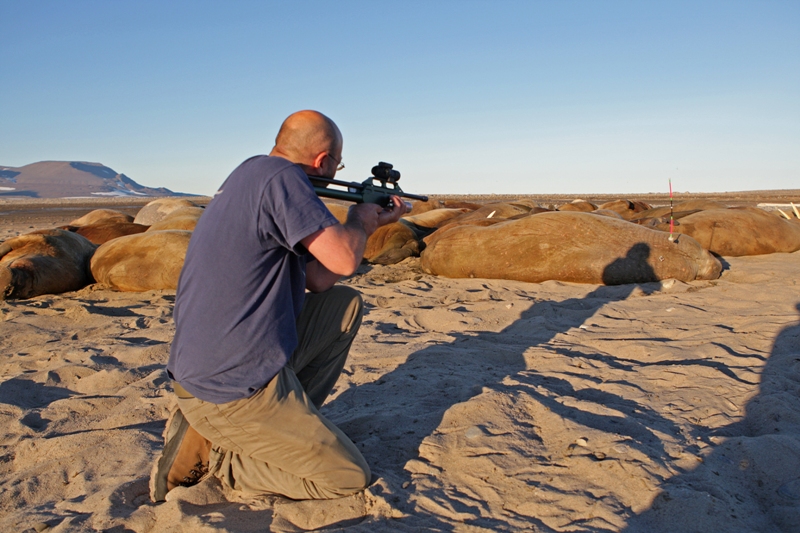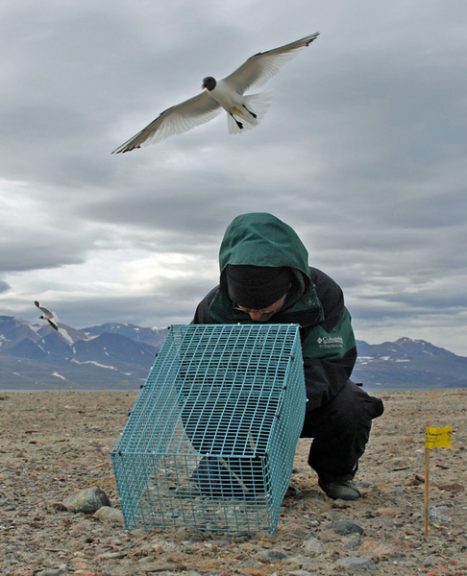Dpt. Birds and mammals

Humpback Whale. Photo: F. Ugarte
The department prepares the Greenland Institute of Natural Resources’ scientific advisory material on exploitation and protection of marine mammals, land mammals, birds, and vegetation.
The department is occupied mainly with species that are of importance to the community, but the financial limits do not enable the department to maintain continuous investigation programs on all exploited species.
Recent years research and monitoring
In the past few years, activities have focused on research and monitoring of beluga, narwhal, great whales, walrus, hooded seal, harp seal, caribou, musk ox, black-throated diver, kittiwake, common eider and arctic tern.
Advising the Government
The department also provides advising and support to the Government of Greenland in areas that are not restricted to species, but are to do with environmental management in general, such as Greenland’s obligations in relation to certain international agreements and classification of Greenlandic animal and plant species according to their status.
Scientific fields of work
The department performs several routine assignments as part of the scientific work. These include age determinations using teeth from seals, belugas, narwhals, and caribou, assessment of the physical condition of birds, data entering, processing of biological samples, analyses of hunting statistics, handling of tags and biological samples, as well as planning and completion of set monitoring assignments.
 The satellite transmitter is inserted into the Walrus. Photo: C. Egevang
The satellite transmitter is inserted into the Walrus. Photo: C. Egevang
Reports and scientific papers, participation in international meetings
In addition, the department continuously plans and carries out new research projects and prepares reports, meeting documents, scientific papers, and advisory material as well as participating in international meetings in scientific settings.
Cooperation with local hunters and gamekeepers
Some of the investigations are carried out in cooperation with local hunters, gamekeepers, and fisheries officers. For instance, Greenland Institute of Natural Resources has entered into an agreement with local hunters who are now carrying out the collection of material and information on breeding eider as well as caribou, musk ox, and seals in several areas. Satellite tracing of hooded seals and narwhal is also carried out in close cooperation with local hunters. The hunter’s information forms part of the basis for the Institutes advising.
The Institute is continuously working to expand this kind of cooperation and to increase the exchange of knowledge between hunters and biologists. This is achieved, among other things, through greater direct contact to local hunters in connection with ongoing projects. In addition, employees make a point of meeting with local interest groups in connection with field work and of participating in relevant seminars etc.
Partners
The department collaborates with the Department of Infrastructure, Climate and Environment and the Department of Fisheries, Hunting and Agriculture, and also enjoys close ties to the Danish Centre for Environment and Energy (DCE), certain universities, and research bodies in other countries.
International scientific cooperation on advising
Employees participate in international scientific activities relating to research and advising on the species with which the department is concerned. The department participates in scientific collaboration and preparation of advisory material for the following international bodies:
- CAFF Circumpolar Seabird Working Group, see also CSWG
- CSWG (Circumpolar Seabird Working Group)
- CARMA (Circum Arctic Rangifer Monitoring and Assessment network)
- CITES – International handel med udryddelsestruede vilde dyr og planter
- Joint Commission on Conservation and Management of Narwhal and Beluga, JCNB
- ICES/NAFO – working group on greenland seals and hooded seals
- IUCN Polar Bear Specialist Group
- IUCN Seal Specialist Group
- IWC (International Whaling Commission)
- IUCN (International Union for Conservation of Nature)
- NAMMCO (North Atlantic Marine Mammal Commission)
- NOR (Nordic Council for Reindeer Husbandry Research)

Re-capture of a Sabine Gull that had a transmitter

